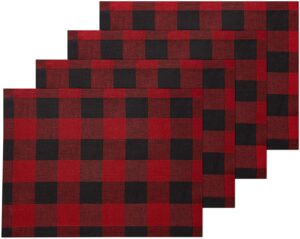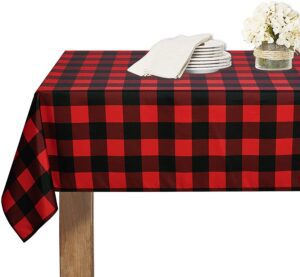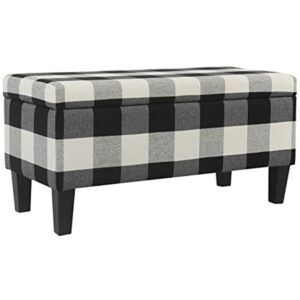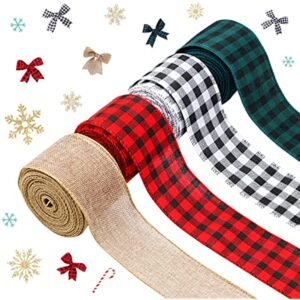Whether you’re a seasoned quilter or just happen to have a beloved quilt that’s in need of a good cleaning, knowing how to properly wash a quilt is essential. From pre-treating stains to choosing the right washing machine settings, this article will guide you through the step-by-step process of keeping your quilt clean and fresh without compromising its durability or beauty. So grab your favorite quilt, roll up your sleeves, and get ready to learn the best techniques for washing and caring for your treasured textile masterpiece.
Understanding the Importance of Properly Washing a Quilt
Quilts are more than just cozy blankets; they are pieces of art that require special care and attention when it comes to cleaning. Properly washing a quilt is essential to preserve its beauty, longevity, and overall quality. Neglecting to wash your quilt correctly can result in irreversible damage, such as fading, color bleeding, fabric deterioration, or even unraveling of delicate embellishments. To keep your quilt in its best condition, it is crucial to understand the importance of following proper washing techniques.
The need for special care and attention
Quilts, particularly antique or heirloom pieces, are often made of delicate and fragile materials. These quilts have withstood the test of time and hold historical or sentimental value. Washing them improperly can cause irreversible damage to the fabric, colors, or stitching. Additionally, handmade quilts require special attention due to the time and effort invested in their creation. By giving your quilt the care it deserves during the washing process, you can ensure its longevity and preserve its sentimental or artistic value.
Understanding the damages of improper washing
Improperly washing a quilt can lead to various damages. If the quilt is not colorfast or the water temperature is too hot, the colors may bleed, resulting in a patchy or faded appearance. Aggressive washing methods, such as scrubbing or spinning at high speed, can cause the fabric or stitches to unravel. Harsh cleaning agents or bleach can weaken the fabric fibers and lead to discoloration or fabric deterioration over time. Delicate embellishments, such as lace, beadwork, or embroidery, can become damaged or detached if not handled with care. By understanding the potential damages, you can take the necessary precautions to avoid them.
Identifying Your Quilt Type
Before proceeding with the washing process, it is essential to identify the specific type of quilt you have. This will help determine the appropriate cleaning methods and precautions.
Antique or heirloom quilts
If your quilt is an antique or heirloom piece, it is crucial to exercise extra caution during the washing process. These quilts are usually made using delicate fabrics and may have fragile stitching. Professional cleaning services or specialized preservation techniques may be necessary to ensure the quilt’s protection and longevity. Avoid machine washing unless specifically recommended by a professional.
Handmade versus machine-made quilts
Handmade quilts require special attention due to the craftsmanship involved. They may have intricate stitching or unique embellishments that require delicate handling. Machine-made quilts, on the other hand, are often more durable and can withstand machine washing. However, always check the quilt’s label or refer to the manufacturer’s instructions for guidance.
The type of fabric materials used
Different fabrics require different washing methods. Fabrics like cotton and polyester are often more durable and can withstand regular machine washing. However, silk, wool, or delicate blends may require hand washing or even professional cleaning. Consult the fabric care instructions or seek expert advice if you are unsure about the specific fabric materials used in your quilt.
Presence of delicate embellishments or elements
Quilts that feature delicate embellishments, such as lace, sequins, or appliques, require extra care. These embellishments may be more prone to damage during the washing process. Consider hand washing or using a gentle cycle in a washing machine specifically designed for delicate fabrics. Take care not to agitate the quilt excessively or use harsh detergents that can degrade these delicate elements.
Checking Label Instructions
Ideally, your quilt will have a label with specific washing and care instructions. However, if there is no labeled guidance, there are still steps you can take to determine the appropriate washing method.
Looking for washing and care instructions
Check the quilt thoroughly for any washing or care instructions. Some quilts may have labels sewn onto them, providing guidance on the appropriate washing temperature, machine settings, or specific cleaning agents to use. If there are any instructions, follow them precisely to ensure optimal results.
What to do if there’s no available label
If your quilt does not have a label, it is best to err on the side of caution and assume it requires gentle handling. Choose the most delicate washing method suitable for the fabric type, such as hand washing or using a gentle cycle on your washing machine. Avoid using harsh detergents or bleach unless you are confident that the fabric can withstand it. If in doubt, consider consulting a professional cleaner who specializes in quilt care for expert advice.
Preparing to Wash Your Quilt
Before immersing your quilt in water, there are several steps to undertake to prepare it for washing. These steps will help ensure a successful and gentle cleaning experience.
Spot cleaning for stains
Inspect your quilt for any visible stains or spots. Address these stains individually before proceeding with the overall cleaning process. Gently dab at the stain with a mild detergent or stain remover suited for the fabric type. Take care not to rub or scrub vigorously, as this can damage the fabric or cause the stain to spread.
Testing colorfastness of the quilt
To ensure that the colors of your quilt do not bleed or fade during washing, perform a colorfastness test. Moisten a small, inconspicuous area of the quilt with water and gently blot it with a white cloth. If any color transfers onto the cloth, it indicates that the quilt is not colorfast and requires special care during washing. In such cases, consider hand washing or consult a professional cleaner.
Proper ways of shaking or airing out the quilt
Before washing, give your quilt a gentle shake or hang it outdoors to air out. This step helps remove any loose dirt or debris that may have accumulated on the quilt’s surface. Be cautious while shaking the quilt to avoid causing damage or unraveling any delicate stitching.
Pre-soak requirements if needed
If your quilt is particularly soiled or has stubborn stains, you may consider pre-soaking it. Fill a large bathtub or basin with lukewarm water and add a gentle fabric soak solution. Submerge the quilt entirely, ensuring that it is fully saturated, and allow it to soak for the recommended duration. Pre-soaking can help loosen stains and dirt, making the subsequent washing process more effective.

Choosing the Right Cleaning Agents
When it comes to washing your quilt, the choice of cleaning agents is crucial. Opting for gentle, quilt-safe detergents will minimize the risk of damage and preserve the fabric’s integrity.
Opting for gentle, quilt-safe detergents
Choose a mild and phosphate-free detergent specifically formulated for delicate fabrics. Avoid using regular laundry detergents or those containing harsh chemicals, bleach, or fabric softeners. These products can degrade the fabric, cause discoloration, or lead to fiber weakening over time. Look for detergents designed for hand washing or suitable for use in high-efficiency washing machines.
Avoiding harsh chemicals or bleach
Harsh chemicals and bleach should be avoided when washing quilts, especially those made of delicate fabrics or with delicate embellishments. These strong cleaning agents can cause discoloration, fabric deterioration, or damage to delicate elements. Always read the detergent’s manufacturer instructions and check for any specific warnings regarding their use with sensitive fabrics.
The use of fabric conditioner
Fabric conditioners can be used to soften and freshen the quilt after washing. However, exercise caution when using fabric conditioners, as they can leave a residue on the fabric if not rinsed off thoroughly. Consider using a fabric conditioner specifically formulated for delicate fabrics and follow the recommended instructions for the appropriate amount to use.
Hand Washing Your Quilt
Hand washing is often the gentlest method for cleaning quilts, particularly those made of delicate fabrics or with fragile embellishments. Follow these steps to ensure a proper hand wash:
Setting up your washing area
Choose a clean and spacious area where you can comfortably wash and rinse the quilt. Ensure that you have a large basin or tub that can accommodate the quilt, as well as access to a water source and a drying area. Prepare your gentle detergent and any necessary cleaning tools, such as a soft sponge or a soft-bristled brush.
Steps for hand washing
Fill the basin with lukewarm water and add the recommended amount of gentle detergent. Swirl the water gently to create a soapy solution. Submerge the quilt in the water, ensuring that it is entirely covered, and allow it to soak for a few minutes to loosen dirt and stains. Gently agitate the quilt in the water, paying special attention to any stained areas. Use a soft sponge or brush, if necessary, to lightly scrub the fabric in a circular motion. Avoid excessive rubbing or agitating, as it can damage the fabric or cause unraveling.
Temperature considerations
When hand washing your quilt, it is essential to use lukewarm water to prevent color bleeding or fabric shrinkage. Avoid hot water, as it can weaken the fabric fibers and cause irreversible damage. Similarly, avoid cold water, as it may not effectively remove stains or dirt. Lukewarm water strikes a balance between cleaning effectiveness and preservation.

Machine Washing Your Quilt
Machine washing is a more convenient option for quilts that can withstand the agitation and spinning of a washing machine. Follow these steps to safely machine wash your quilt:
Suitable machine settings
Set your washing machine to a gentle or delicate cycle, using cold or lukewarm water. Avoid the use of a top-loading machine with an agitator, as the agitator may cause excessive stress on the quilt. Instead, opt for a front-loading machine or a machine with no agitator. High-efficiency washing machines are often more gentle and provide better control over the washing process.
Steps for machine washing a quilt
Place the quilt in the washing machine, ensuring that it is not overcrowded. Overloading the machine can lead to inadequate cleaning or excessive strain on the quilt. Add the recommended amount of mild detergent, following the product’s instructions. Start the machine and allow it to complete the cycle without interruption. Once the cycle is finished, remove the quilt promptly from the machine to prevent creasing or excessive wrinkling.
Adding in other laundry items
If you choose to machine wash your quilt, consider adding in a few clean towels or similar items to provide cushioning and reduce the agitation impact on the quilt. The additional items act as buffers and help distribute the washing process’s pressure more evenly. Avoid adding items with zippers, hooks, or rough textures that may catch or snag the quilt during washing.
Drying Your Quilt
Proper drying techniques are crucial to prevent damage and maintain the quilt’s integrity. The drying process can vary depending on the quilt type and fabric materials used.
Drying options based on quilt type
For delicate or antique quilts, air drying is often the preferred method. Air drying allows the quilt to retain its shape and prevent potential damage from excessive heat or tumbling. Machine-made quilts or those made of durable fabrics may be suitable for tumble drying, but precautions must be taken.
Air-drying process
To air dry your quilt, spread it out flat on a clean, dry surface, such as a bedsheet or a clean patio or clothesline. Avoid using clothespins, as they can leave marks or distort the fabric. Ensure proper airflow and ventilation in the drying area to facilitate drying. Rotate the quilt periodically to promote even drying and prevent any moisture buildup.
Tumble-drying process
If tumble-drying is suitable for your quilt, select a low heat or delicate cycle on your dryer. Add a few clean tennis balls or dryer balls to the dryer to help fluff and distribute the quilt during the drying process. This will prevent the quilt from clumping or becoming unevenly dried. Check the quilt periodically during the drying cycle to ensure it is not overheating or experiencing excessive agitation.
Avoiding direct sunlight exposure
Whether air drying or tumble drying, it is best to avoid exposing your quilt to direct sunlight. Prolonged exposure to the sun’s rays can cause fading or discoloration. Instead, choose a shaded or indoor area for drying your quilt to protect its colors and fabric.
Maintaining Your Quilt’s Quality in Between Washes
In between washes, it is essential to implement proper maintenance techniques to keep your quilt fresh and minimize the need for frequent cleaning.
Keeping the quilt fresh
Regularly air out your quilt by shaking it gently or hanging it in a well-ventilated area. This helps remove any odors and allows for proper airflow. Consider using a fabric refresher spray specifically designed for delicate fabrics to freshen up the quilt between washes. Always follow the product instructions and test it on a small inconspicuous area of the quilt.
Promptly addressing stains or damages
Address any stains or damages promptly to prevent them from setting in or worsening over time. Spot clean stains as soon as they occur, using mild detergent or stain removers suited for the fabric type. If your quilt requires professional stain removal or repair, consult a specialized cleaner experienced in handling quilts to ensure the best results.
Proper storage methods
When not in use, store your quilt in a cool, dry place away from direct sunlight or extreme temperature fluctuations. Avoid folding or compressing the quilt excessively, as this can cause permanent creases or damage to the fabric. Instead, store the quilt in a breathable cotton or muslin bag or wrap it in acid-free tissue paper. This will provide protection against dust, while allowing the quilt to maintain its shape.
Professional Quilt Cleaning Services
There may be instances where professional quilt cleaning services are necessary, particularly for antique, heirloom, or delicate quilts. Professional cleaners have the expertise and specialized equipment to handle quilts with utmost care.
When to consider professional cleaning
Consider professional cleaning if your quilt:
- Is an antique or heirloom piece
- Features delicate or fragile materials
- Requires significant stain removal
- Shows signs of fabric deterioration or damage
- Has intricate or fragile embellishments that require special handling
Choosing a reliable cleaning service
When selecting a professional quilt cleaning service, seek recommendations from fellow quilt enthusiasts, local quilt guilds, or online communities. Look for cleaners who have experience in handling quilts, use gentle cleaning methods, and have a track record of positive customer reviews. Prioritize cleaners who offer a detailed assessment and consultation before proceeding with the cleaning process.
What to expect from the cleaning process
A professional quilt cleaner will assess your quilt’s condition and discuss any specific concerns or requirements with you. They will determine the most appropriate cleaning method, whether it be hand washing, dry cleaning, or specialized preservation techniques. Throughout the process, they will use specialized cleaning agents and equipment to ensure gentle yet effective cleaning. Professional cleaning services often include additional steps such as stain removal, repair of damages, and preservation treatments to enhance the quilt’s appearance and longevity.
By understanding the importance of properly washing a quilt and following the appropriate cleaning techniques, you can ensure its longevity, preserve its beauty, and continue to enjoy its warmth and comfort for years to come. Whether hand washing or machine washing, treating stains promptly, or seeking professional cleaning advice when necessary, your quilt will thank you for the extra care and attention. So go ahead, put your quilt’s well-being first, and embrace the joy of a clean and well-maintained quilt.
























